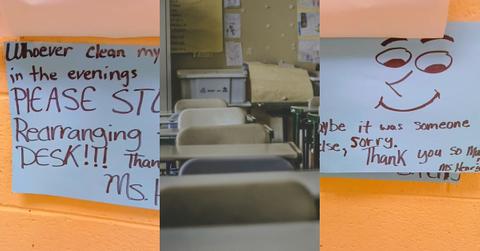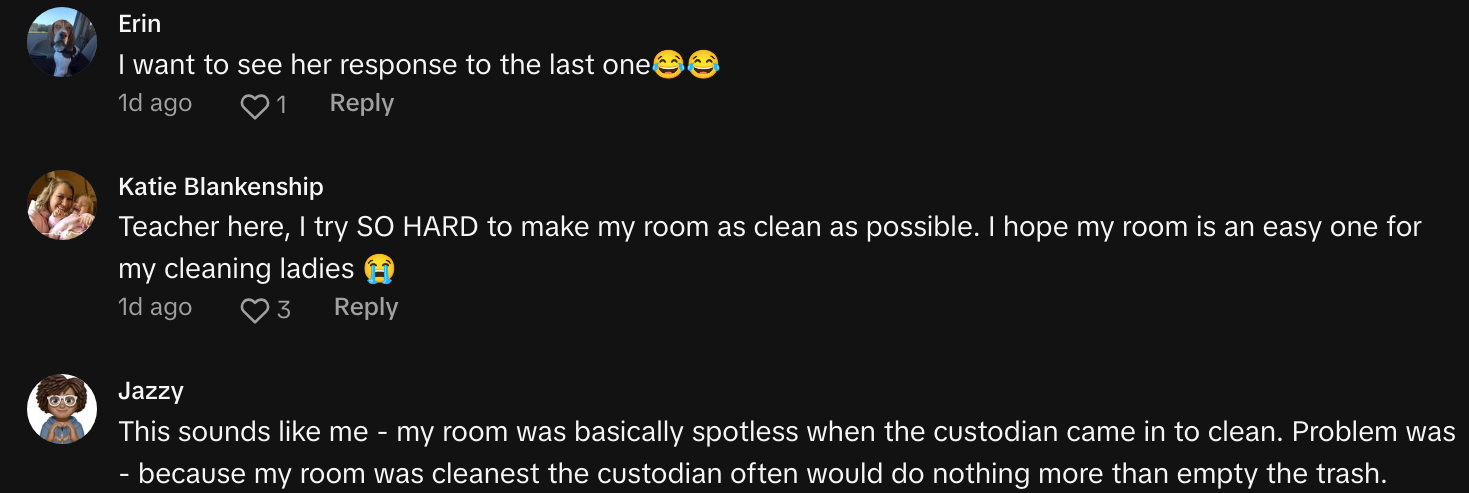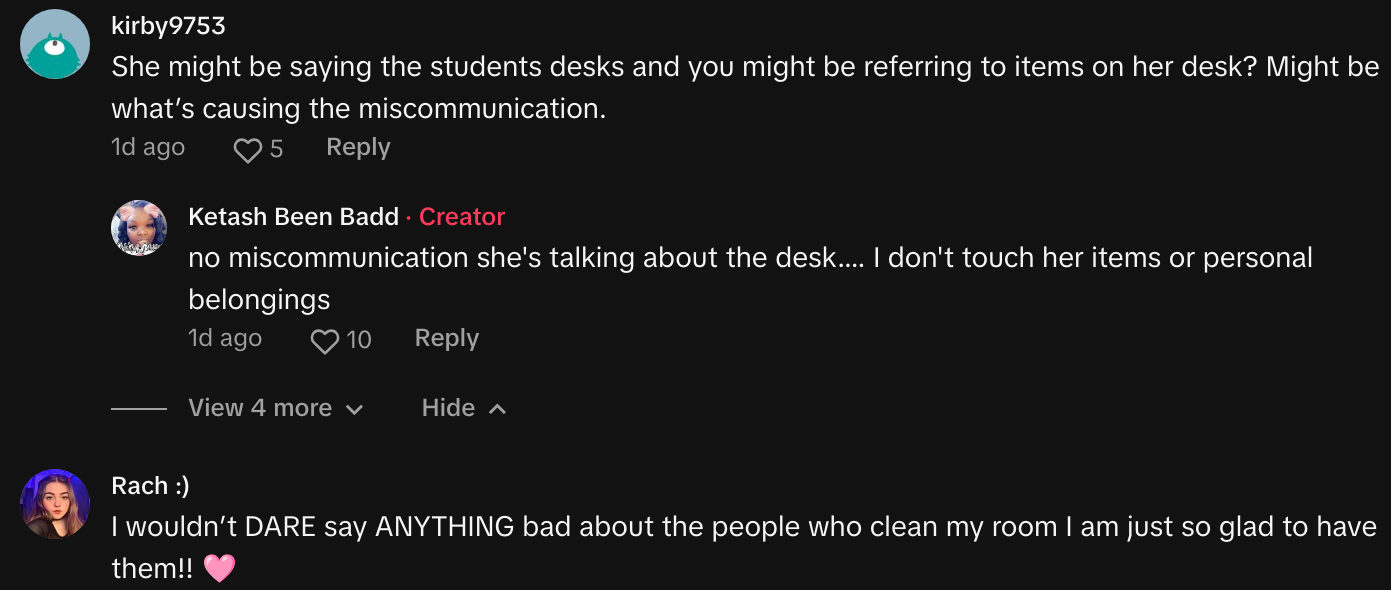"Who’s Rearranging the Desks?" — Part-Time Cleaner's Sparks Larger Conversation on Education
"The lil cartoon faces I’m cryin."
Published Nov. 23 2024, 4:00 p.m. ET

In a video that has hit the 165K view mark and counting, part-time school cleaner Ketash (@ketashbeenbadd) shared a lovely exchange of hand-written notes with a teacher, Ms. Henry, whose classroom she cleans.
The exchange began when Ms. Henry left a handwritten note asking whoever cleaned her classroom not to rearrange the desks.
Ketash responded, writing her own note overtop Ms. Henry’s, “I do not rearrange your desks. I just sweep and mop. Your room is one of the cleanest on the hall, and I thank you for that.”
Ms. Henry apologized for the misunderstanding, and the back-and-forth ended on a positive note, with Ketash even cheekily suggesting that Ms. Henry teach neighboring classrooms to keep their spaces just as clean.
The internet latched onto the polite interaction. One commenter praised the professionalism of both women, saying, “I love how well you communicate. Didn’t have to be no arguing. Just straight up what it is.”
Another joked, “Lmaooooo girl I hollered you throwing the other classes under the bus.” Another hoped for a cleaner like Ketash: “I’d give anything to have my classroom cleaned or even trash emptied!”
Another video explained Ketash’s gripe — showcasing the much messier side of her job. Panning around a chaotic classroom littered with books, papers, and crayons, she voiced her frustration: “Who let their kids go to school and get these classrooms nasty like this? This is all one class, one day. The next day, it’s the same way — or worse.”

The contrast between Ms. Henry’s tidy room and the other classrooms was evident, speaking to the challenges custodial staff face in maintaining clean spaces.
This glimpse into classroom conditions raises questions about the state of public education in the United States. Over the past few decades, education has undergone dramatic changes, with increasing student-to-teacher ratios and tighter budgets.
Despite federal COVID relief funds temporarily boosting resources, schools often struggle with overcrowded classrooms and insufficient staff.

Ketash’s experience may reflect broader trends in the education system. Larger class sizes, reduced staffing, and stretched resources can contribute to the chaos seen in classrooms. According to a recent study, public school enrollment has been declining steadily, but funding gaps persist.
Meanwhile, teachers are expected to manage not only academics but also the physical upkeep of their classrooms — a tall order for an already taxing job.
Additionally, the national conversation about education is shifting. School choice, a policy strongly supported by President-elect Donald Trump, aims to provide families with alternatives to traditional public schools. Proponents argue that school choice could drive innovation and competition among schools.

Critics, however, fear that diverting resources to private and charter schools may further strain already underfunded public institutions.
As these debates unfold, the importance of everyday interactions like the one between Ketash and Ms. Henry cannot be overstated.
Courteous exchanges serve as a reminder of how communication and respect can cut through even the messiest situations — literally and figuratively.
Ketash’s videos shine a light on the realities of school environments today, sparking conversations about the challenges faced by educators, custodial staff, and students alike.
While policies and funding debates will shape the future of education, it’s the dedication of individuals like Ketash and Ms. Henry that keeps schools running smoothly — for now.